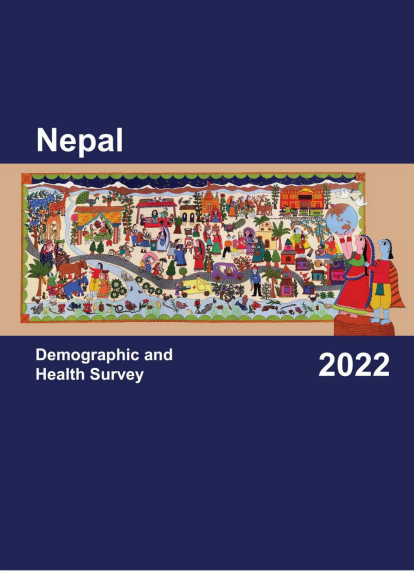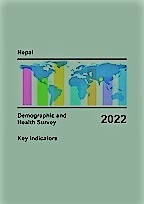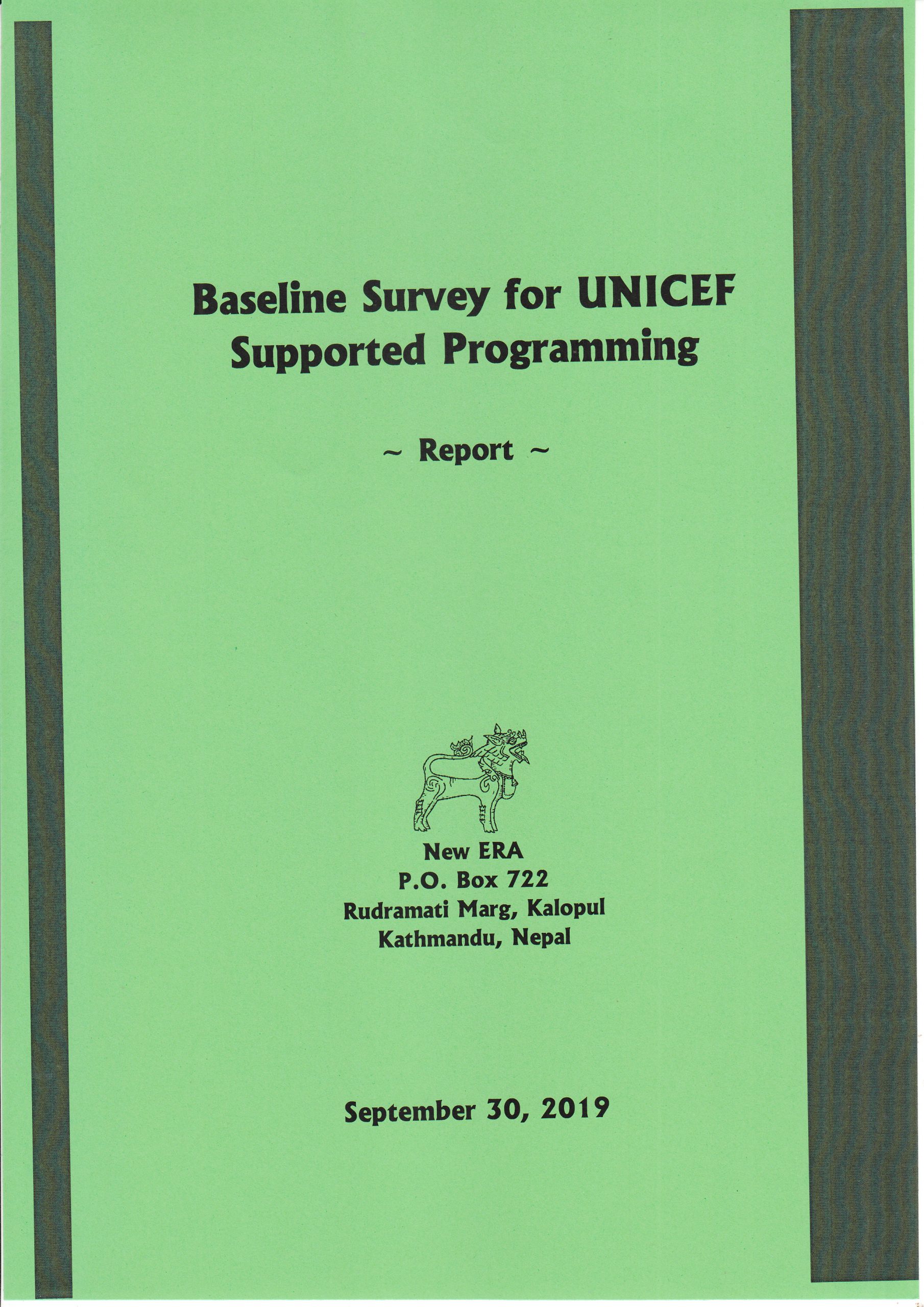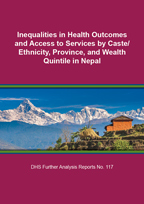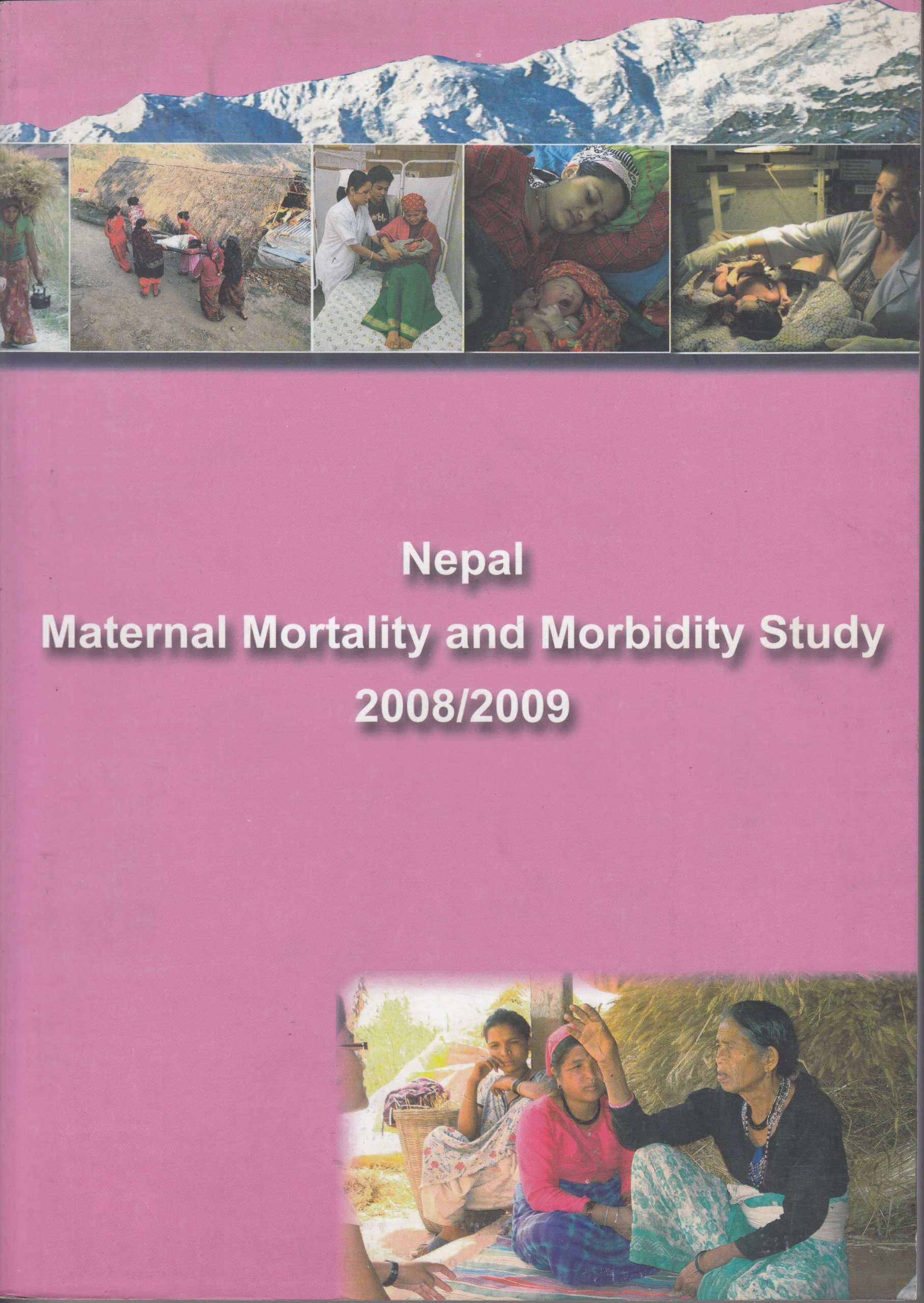Report Type: Maternal Care
Nepal Demographic and Health Survey 2022 – Key Indicators
This survey is the tenth in a series of national-level population and health surveys and the sixth comprehensive survey conducted as part of the Global Demographic and Health Surveys (GDHS) program. The objective of this survey is to collect data on fertility levels; contraceptive use; maternal and child health; childhood mortality; childhood immunization; breastfeeding and young child feeding practices; women’s dietary diversity; violence against women; nutritional status of women and children; awareness regarding HIV/AIDS and sexually-transmitted infections; tobacco use; disability; mental health; accident and injury; fistula, and other indicators relevant for the Sustainable Development Goals.
Nepal Demographic and Health Survey 2016
This survey is the ninth in a series of national-level population and health surveys and the fifth comprehensive survey conducted as part of the Global Demographic and Health Surveys (GDHS) program. The main objective of this survey is to generate recent and reliable information on demographic and health situation of Nepal. Specifically the study collects and calculates the data on fertility rates, contraceptive knowledge and practice, reproductive health of women; infant and child mortality, maternal and child health, Domestic Violence and knowledge of HIV/AID/STD. The study also assesses the nutritional status, anemia, health care utilization of women and children. It was designed to collect demographic and health information from a nationally representative sample to provide information at the national and sub-national level.
Baseline Survey for UNICEF Supported Palikas
The purpose of the survey was to establish baseline indicators to selected palikas of Nepal. The study will assess outcome, output and process indicators on quality of preschool and basic education; universal access to quality health services; well nourished; access to safe water and toilets at household level and good hygiene practices; access to quality maternal care of all mothers; living in safe, supportive and caring family environment; access to information, knowledge, skill and adolescent-responsive social services among adolescents people of 32 districts among 2, 5, 6 and 7 Provinces of Nepal.
Further Analysis of 2016 Nepal Demographic and Health Survey
This further analysis study of 2016 NDHS was implemented New ERA under the aegis of Ministry of Health and Population of Nepal with financial support of USAID and technical assistance was provided by ICF International. The primary objective of this study was to provide more in-depth knowledge and insights into key issues that emerged from the 2016 NDHS. The information of this further analysis provides guidance for planning implementing, refocusing, monitoring and evaluating health programs in Nepal. The further analysis is published in different seven topics:
- Youth Health in Nepal: Levels, Trends, and Determinants (NDHS 2016 FA 116)
- Inequalities in Health Outcomes and Access to Services by Caste/Ethnicity, Province, and Wealth Quintile in Nepal (NDHS 2016 FA 117)
- Maternal Health Care in Nepal: Trends and Determinants (NDHS2016 FA118)
- Unmet Need for Family Planning and Fertility in Nepal: Levels, Trends, and Determinants (NDHS2016 FA119)
- Childhood Illness and Mortality in Nepal: Trends and Determinants (NDHS2016 FA120)
- Factors Affecting Vaccination Coverage and Retention of Vaccination Cards in Nepal (NDHS2016 FA121)
- Child Undernutrition and Feeding Practices in Nepal: Trends, Inequities, and Determinants (NDHS2016 FA122)
Maternal Mortality and Morbidity Study 2008-09
This study was undertaken under the aegis of the Department of Health Services, Ministry of Health, with the technical and financial assistance from the DFID/Options, UK and USAID/Macro International, USA. The 2006 NDHS indicated a substainable reduction of MMR to 281 per thausad live birth. This study was to investigate factors associated with maternal mortality and morbidity in Nepal. The gained a better understanding of the causes of death of women during pregnancy. The study identified the factors that may have influenced levels of maternal mortality and morbidity in the past.



